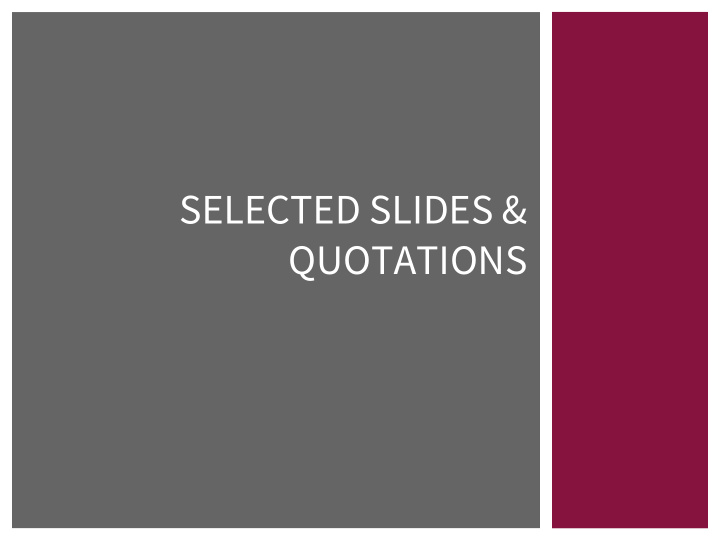



SELECTED SLIDES & QUOTATIONS
THE IDEAL OUTCOMES When our work goes spectacularly well… ◼ How will we know? ◼ What will we have accomplished? ◼ How will we describe the results? ◼ How are our teachers different? ◼ How are our schools different? ◼ What will it look like? Sound like? Feel like?
THE IDEAL OUTCOMES 1. Reflect individually 2. Brainstorm & populate chart paper 3. Share & discuss openly 4. Gather consensus through the “Dot Protocol” ( The Principal Influence , p. 153) 5. Re-record the top 4-7 items as our de facto collaborative vision
CAPACITY-BUILDING GOALS
MATCHING FEEDBACK TO RECIPIENT • Positive praise & specific directions Unaware • Specific observations & leading prompts Conscious • Specific observations & open prompts Action • Specific observations & challenging prompts Refinement
“Because so many teachers feel called to their profession, asking for change is like asking them to change religions .” -Jane Kise, Differentiated Coaching
“Not only does every unique and special carbon-based life-form in your school appreciate unique and special treatment, each one needs individualized handling. It is the equivalent of educational malpractice for us to usher all our teachers into neat rows, robotically interacting with them with nary a thought to the gifts they bring to their classrooms.” -Hall & Simeral, BTCFS (p.13)
“It’s not the doing that matters. It’s the thinking about the doing.” -John Dewey
“Shifting action doesn’t always result in shifted thinking, but shifting thinking will always result in shifted action.” -Hall & Simeral, 2017
“A ‘Culture of Reflective Practice’ is an organization that embraces reflective growth as the primary driving force behind continuous lasting improvement. In such an organization, members speak the language of reflection, engage in rigorous meta-cognitive tasks, and earnestly support their individual and collective growth. The entire organization oozes self-reflection.” -Hall & Simeral, 2017
Recommend
More recommend